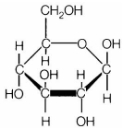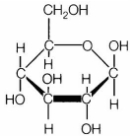CBSE Class 11 Biology – MCQ and Online Tests – Unit 9 – Biomolecules
Every year CBSE schools conducts Annual Assessment exams for 6,7,8,9,11th standards. These exams are very competitive to all the students. So our website provides online tests for all the 6,7,8,9,11th standard’s subjects. These tests are also very effective and useful for those who preparing for any competitive exams like Olympiad etc. It can boost their preparation level and confidence level by attempting these chapter wise online tests.
These online tests are based on latest CBSE syllabus. While attempting these our students can identify the weak lessons and continuously practice those lessons for attaining high marks. It also helps to revise the NCERT textbooks thoroughly.
CBSE Class 11 Biology – MCQ and Online Tests – Unit 9 – Biomolecules
Question 1.
With reference to enzymes, which one of the following statements is true?
(a) Apoenzyme = Holoenzyme + Coenzyme
(b) Holoenzyme = Apoenzyme + Coenzyme
(c) Coenzyme = Apoenzyme + Holoenzyme
(d) Holoenzyme = Coenzyme – Apoenzyme
Answer
Answer: (b) Holoenzyme = Apoenzyme + Coenzyme
Question 2.
Inhibitor binds to the active site of the enzyme. Hence blocking the reaction. This is an example of
(a) allosteric inhibition
(b) feedback inhibition
(c) uncompetitive inhibition
(d) competitive inhibition
Answer
Answer: (d) competitive inhibition
Explanation:
When substrate binds to the active site of the enzyme, it completes the reaction.
When inhibitor binds to the active site of the enzyme, it blocks the reaction.
Question 3.
Assertion: Arachidic acid is an unsaturated fatty acid.
Reason: There are one or more double bonds between carbon atoms in unsaturated fatty acids.
(a) Both Assertion and Reason are true and Reason is the correct explanation of the Assertion.
(b) Both Assertion and Reason are true but the Reason is not the correct explanations of Assertion.
(c) Assertion is true, but Reason is false.
(d) Both Assertion and Reason are false
Answer
Answer: (d) Both Assertion and Reason are false
Question 4.
Insulin is made up of _______ and _______.
(a) glucose and fructose
(b) glucose and fructose
(c) fructose and mannose
(d) mannose and glucose
Answer
Answer: (b) glucose and fructose
Explanation:
Insulin is a polysaccharide made up of glucose and fructose.
Question 5.
Enzymes increase the rate of reaction by
(a) lowering activation energy
(b) increasing activation energy
(c) increasing temperature and pH
(d) decreasing temperature and pH
Answer
Answer: (a) lowering activation energy
Explanation:
Enzymes increase the rate of reaction by decreasing the activation energy.
Question 6.
Which of the following statements regarding enzyme inhibition is correct?
(a) Competitive inhibition is seen when a substrate competes with an enzyme for binding to an inhibitor protein
(b) Non-competitive inhibitors often bind to the enzyme irreversibly
(c) Competitive inhibition is seen when the substrate and the inhibitor compete for the active site on the enzyme
(d) Non-competitive inhibition of an enzyme can be overcome by adding large amount of substrate
Answer
Answer: (c) Competitive inhibition is seen when the substrate and the inhibitor compete for the active site on the enzyme
Question 7.
Which of the following is not a pyrimidine?
(a) Uracil
(b) Cytosine
(c) Guanine
(d) Thymine
Answer
Answer: (c) Guanine
Explanation:
Guanine is a purine.
Question 8.
Hydrolysis of starch occurs with the help of
(a) Peptidase
(b) Amylase
(c) Sucrose
(d) Lipase
Answer
Answer: (b) Amylase
Question 9.
Which of the following influence feedback inhibition of enzyme?
(a) End product
(b) External factors
(c) Enzyme
(d) Substrate
Answer
Answer: (a) End product
Question 10.
Which of the following is not a polysaccharide?
(a) Lactose
(b) Starch
(c) Glycogen
(d) Dextrin
Answer
Answer: (a) Lactose
Explanation:
Lactose is a disaccharide made up of glucose and galactose.
Question 11.
Inulin is made up of _______ and _______.
(a) glucose and fructose
(b) glucose and fructose
(c) fructose and mannose
(d) mannose and glucose
Answer
Answer: (b) glucose and fructose
Explanation:
Inulin is a polysaccharide made up of glucose and fructose.
Question 12.
The structure shown above is
(a) mannose
(b) fructose
(c) glucose
(d) galactose
Answer
Answer: (c) glucose
Explanation:
Glucose molecule
Question 13.
A protein having both structural and enzymatic traits is
(a) Collagen
(b) Trypsin
(c) Myosin
(d) Actin
Answer
Answer: (c) Myosin
Question 14.
NADP contains vitamin ______.
(a) B1
(b) B2
(c) B3
(d) B12
Answer
Answer: (c) B3
Explanation:
B3 also named as niacin.
Question 15.
The minimum amount of energy required to initiate a chemical reaction is called
(a) enzymatic energy
(b) activation energy
(c) substrate energy
(d) initiation energy
Answer
Answer: (b) activation energy
Explanation:
The minimum amount of energy required to initiate a chemical reaction is called activation energy.
Question 16.
Enzymes, vitamins and hormones are common in
(a) Enhancing oxidative metabolism
(b) Being synthesised in the body of organisms
(c) Being proteinaceous
(d) Regulating metabolism
Answer
Answer: (d) Regulating metabolism
Question 17.
Feedback inhibition of enzymes is affected by which of the following
(a) enzyme
(b) substrate
(c) end products
(d) intermediate end products
Answer
Answer: (c) end products
Question 18.
An example of competitive inhibition of an enzyme is the inhibition of
(a) succinic dehydrogenase by malonic acid
(b) cytochrome oxidase by cyanide
(c) hexokinase by glucose-6-phosphate
(d) carbonic anhydrase by carbon dioxide
Answer
Answer: (a) succinic dehydrogenase by malonic acid
Question 19.
The fastest enzyme known is
(a) DNA polymerase
(b) carbonic anhydrase
(c) carbonic dehydrogenase
(d) DNA ligase
Answer
Answer: (b) carbonic anhydrase
Explanation:
The fastest enzyme known is carbonic anhydrase. It converts 106 molecules of carbon dioxide molecules per second.
Question 20.
Lecithin is a
(a) polysaccharide
(b) protein
(c) nucleic acid
(d) lipid
Answer
Answer: (d) liquid
Explanation:
Lecithin is a phospholipid.














0 Comments:
Post a Comment